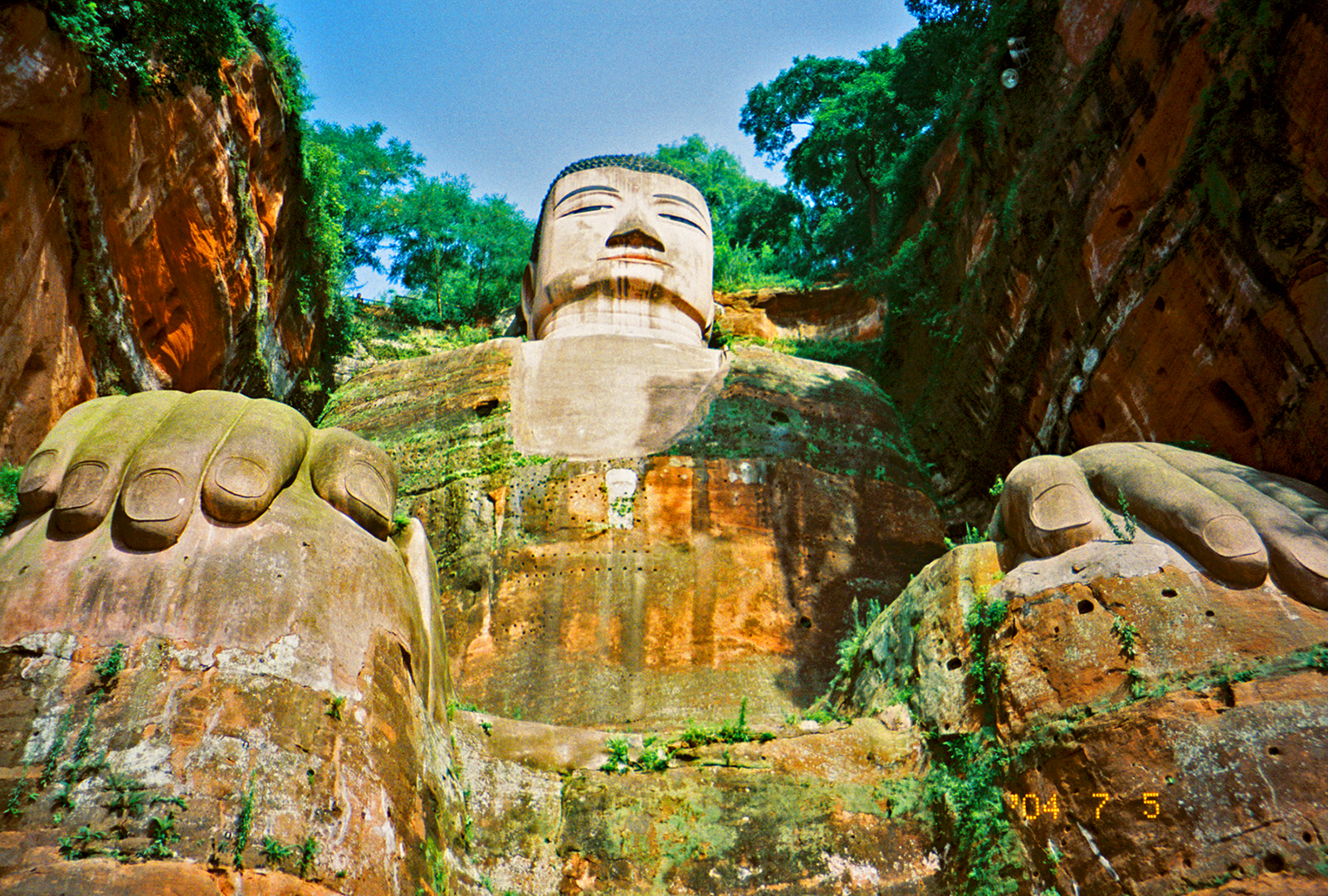
Leshan Buddha – photos and importance today
The Leshan Giant Buddha, located in Sichuan province, China, is the world’s largest stone Buddha statue, standing at an impressive 71 meters (233 feet) tall.
Construction of the Buddha began in 713 AD during the Tang Dynasty, initiated by a Chinese Buddhist monk named Hai Tong. Hai Tong’s motivation for building the statue was to calm the turbulent waters at the confluence of the Min, Qingyi, and Dadu rivers, which had caused numerous shipping accidents. Legend has it that when funding for the project was threatened, Hai Tong gouged out his own eyes to demonstrate his dedication.
The construction of the Giant Buddha was a monumental task that spanned 90 years, finally reaching completion in 803 AD. Unfortunately, Hai Tong did not live to see the finished statue, as he passed away when only the shoulders had been completed. The project faced several interruptions due to insufficient funding but was eventually completed by Hai Tong’s disciples with the support of local governors.
The statue is carved into a red sandstone cliff face, with remarkable details. Its fingers are 8.3 meters long, its shoulders span 28 meters, and its ears, made of wood covered in mud, are 7 meters long. The Buddha sits at the confluence of three rivers, where it has stood for over 1,300 years.
Today, the Leshan Giant Buddha holds great importance as both a religious site and a major tourist attraction:
1) UNESCO World Heritage Site: In 1996, it was inscribed as a UNESCO World Heritage site along with Mount Emei, recognizing its exceptional cultural significance.
2) Buddhist pilgrimage site: The area around the Buddha has become one of China’s most important centers of Buddhism.
3) Tourist attraction: It receives millions of visitors annually, contributing significantly to the local economy.
4) Archaeological importance: The site, including surrounding historic structures, provides valuable insights into ancient Chinese lifestyles and engineering techniques.
5) Cultural symbol: The Buddha represents the integration of Buddhism into Chinese culture and the artistic achievements of the Tang Dynasty.
Visitors can view the Buddha from various perspectives, either by walking down a steep stairway to its feet or by taking a boat ride on the river for a panoramic view. However, the statue faces ongoing challenges from erosion and pollution, necessitating continuous preservation efforts.
The Leshan Giant Buddha stands as a testament to ancient Chinese engineering, religious devotion, and artistic skill, continuing to inspire awe and reverence in visitors from around the world.
Leshan Giant Buddha-Mt Emei,tourism promotional video
What are some lesser-known facts about the Leshan Buddha
1) The Buddha’s drainage system is ingenious. There is an intricate system of hidden gutters and channels built into the statue that help drain water and prevent weathering. This ancient drainage system has helped preserve the statue for over 1,300 years.
2) The Buddha’s ears are made of wood and clay, not stone like the rest of the statue. They are 7 meters long and were added after the main carving was completed.
3) Local architectural regulations prohibit buildings in Leshan from being taller than the Buddha statue. The tallest building in the city is 68 meters high, while the Buddha is 71 meters tall.
4) During construction, the stones removed from the cliff face were deposited into the river below. This actually helped calm the turbulent waters at the confluence of the three rivers, making the area safer for boats as the monk Hai Tong had originally intended.
5) The Buddha’s fingernails are capable of holding a seated person. Each nail is about 1.5 meters long.
6) There are over 1,000 coiled hair buns on the Buddha’s head. These intricate carvings have endured for centuries.
7) The statue is so large that a traditional Chinese proverb states: “The mountain is a Buddha and the Buddha is a mountain”.
8) During World War II, Japanese warplanes reportedly tried to bomb the Buddha statue but were unable to accurately target it due to the dense fog that often surrounds the area.
9) In addition to the main Buddha statue, there are numerous smaller Buddha carvings in the surrounding cliffs. Over 90 stone Buddha statues have been carved into the cliff faces near the giant Buddha.
10) The construction of the Buddha statue actually took three generations of workers to complete, spanning 90 years from 713 AD to 803 AD.
These facts highlight the remarkable engineering, cultural significance, and enduring legacy of the Leshan Giant Buddha.

